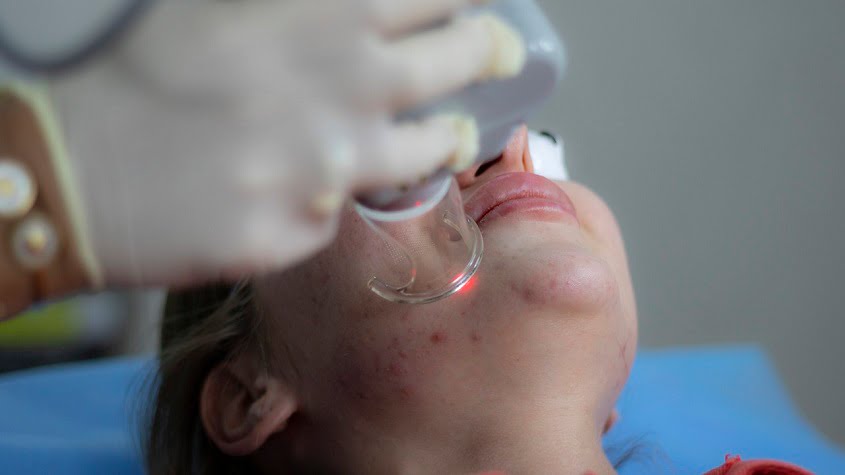Cold Laser Therapy: An Alternative to Invasive Treatments – Domer Laser
- Updated on: Dec 12, 2023
- 4 min Read
- Published on Feb 9, 2023

What disease can be treated by cold laser therapy?
Cold laser therapy is a type of therapeutic treatment that uses a low-level laser to treat a variety of diseases and conditions. It is a non-invasive, painless, and drug-free treatment that is used to treat many chronic and acute health issues. The light from the laser is believed to interact with tissue and is thought to help accelerate the healing process by increasing circulation and reducing inflammation.
Cold laser therapy has been used to treat a wide range of conditions, including arthritis, carpal tunnel syndrome, tendonitis, and plantar fasciitis. It has also been used to treat chronic pain, headaches, and even depression. Cold laser therapy is also used to treat a variety of skin conditions, including acne, eczema, and psoriasis. In addition, it is often used to reduce inflammation and promote healing of wounds and scars.
Cold laser therapy is believed to be safe and effective, with few side effects. It is often used in conjunction with other treatments, such as physical therapy and medications. The length of treatment and the number of treatments needed will depend on the individual condition and the patient’s response to the therapy.
How long does it take for cold laser therapy to work?
When it comes to treating chronic pain and inflammation, cold laser therapy is becoming increasingly popular. Cold laser therapy is a non-invasive treatment that uses low levels of laser light to stimulate the body’s natural healing processes. But, how long does it take for cold laser therapy to work?
The answer to this question depends on several factors, including the type of condition being treated, the severity of the condition, and the duration and frequency of the treatments. Generally speaking, most people begin to experience some relief from their symptoms after just one cold laser treatment. Research suggests that, in some cases, even just one session can offer pain relief for up to several weeks.
However, for more chronic conditions, such as arthritis and other forms of joint pain and inflammation, multiple treatments may be necessary to achieve long-term relief. Most practitioners recommend a course of at least three to five treatments, with each session taking place over a period of two to four weeks. This approach allows the body to slowly adjust to the laser light, which in turn helps the body to better absorb the laser energy and begin to heal itself.
In addition to the number of treatments, the frequency of the sessions is also important to consider. Generally speaking, a treatment plan for cold laser therapy should include weekly sessions for the first four weeks, followed by monthly sessions thereafter.
Finally, the amount of time it takes to see results from cold laser therapy also depends on the individual and their health condition. Some people may see results after just one treatment, while others may need several treatments over a period of weeks or months before they experience any meaningful relief from their symptoms.
Cold laser therapy is a highly effective and safe treatment for chronic pain and inflammation. It is important to remember, however, that the length of time it takes for cold laser therapy to work will vary from person to person and should be discussed with a healthcare professional before beginning a treatment plan. With the right treatment plan, however, sufferers of chronic pain and inflammation can experience lasting relief with cold laser therapy.
What is the side effect of cold laser therapy?
The most common side effects of cold laser therapy are minor and temporary. These include skin irritation, heat or redness at the treatment site, and mild pain or discomfort during the treatment. Other reported side effects include temporary swelling or bruising at the treatment site, temporary hair loss, and a tingling or burning sensation at the treatment site. In rare cases, cold laser therapy may also cause an allergic reaction, such as a rash or hives.
In addition to these potential side effects, cold laser therapy may also interfere with certain medications. It is important to discuss any medications you are taking with your doctor before undergoing a cold laser therapy treatment. This is especially important for medications that affect the immune system, such as steroids and non-steroidal anti-inflammatory drugs (NSAIDs).
Overall, cold laser therapy is a safe and effective treatment option for many conditions. However, it is important to be aware of the potential side effects, and to discuss any medications you are taking with your doctor before undergoing a cold laser therapy treatment.
How to use cold laser therapy device to treat the pain?
Cold laser therapy is an emerging form of treatment for chronic pain. It is a non-invasive therapy that uses low-level laser light to reduce inflammation and promote healing. The therapy is often used for conditions like arthritis, carpal tunnel syndrome, tendinitis, and other musculoskeletal issues.
When using a cold laser therapy device, it is important to follow the instructions carefully. Most devices are equipped with a timer and you should set the timer to the recommended amount of time. It is also important to keep the device away from your eyes and other sensitive body parts, as the laser light can be damaging.
When treating an area of the body, it is important to move the device in a circular motion, starting from the center of the affected area and working your way outward. You should aim to apply the laser light for at least 5-10 minutes per session.
It is also important to remember that cold laser therapy is not an instant cure-all and it will take time and consistency to see results. Most people will need to complete multiple sessions before they start to notice a difference in their pain levels.
If you have any questions or concerns about using a cold laser therapy device, you should talk to your doctor or physical therapist. They can help you determine the best course of treatment for your condition and provide guidance on proper usage of the device.









